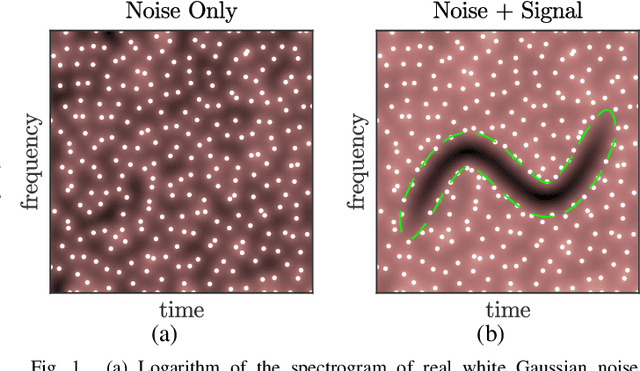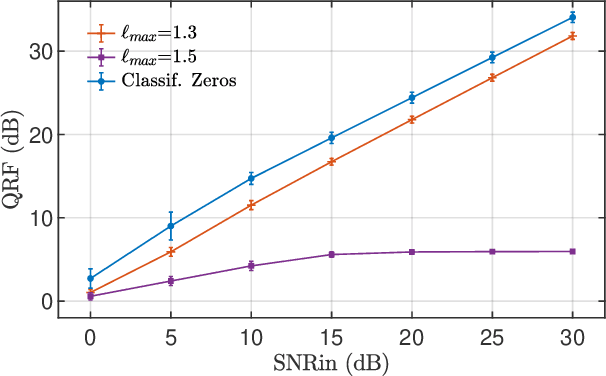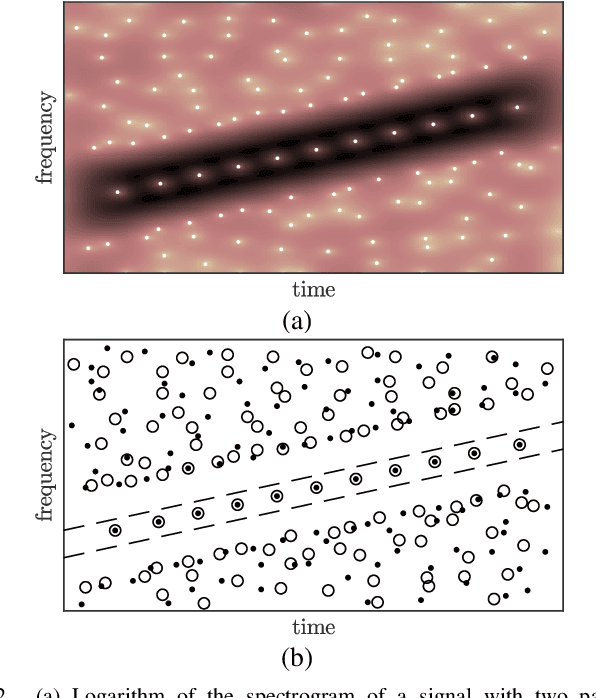Sylvain Meignen
DAO
Learnable Adaptive Time-Frequency Representation via Differentiable Short-Time Fourier Transform
Jun 26, 2025Abstract:The short-time Fourier transform (STFT) is widely used for analyzing non-stationary signals. However, its performance is highly sensitive to its parameters, and manual or heuristic tuning often yields suboptimal results. To overcome this limitation, we propose a unified differentiable formulation of the STFT that enables gradient-based optimization of its parameters. This approach addresses the limitations of traditional STFT parameter tuning methods, which often rely on computationally intensive discrete searches. It enables fine-tuning of the time-frequency representation (TFR) based on any desired criterion. Moreover, our approach integrates seamlessly with neural networks, allowing joint optimization of the STFT parameters and network weights. The efficacy of the proposed differentiable STFT in enhancing TFRs and improving performance in downstream tasks is demonstrated through experiments on both simulated and real-world data.
Disentangling Modes and Interference in the Spectrogram of Multicomponent Signals
Mar 19, 2025Abstract:In this paper, we investigate how the spectrogram of multicomponent signals can be decomposed into a mode part and an interference part. We explore two approaches: (i) a variational method inspired by texture-geometry decomposition in image processing, and (ii) a supervised learning approach using a U-Net architecture, trained on a dataset encompassing diverse interference patterns and noise conditions. Once the interference component is identified, we explain how it enables us to define a criterion to locally adapt the window length used in the definition of the spectrogram, for the sake of improving ridge detection in the presence of close modes. Numerical experiments illustrate the advantages and limitations of both approaches for spectrogram decomposition, highlighting their potential for enhancing time-frequency analysis in the presence of strong interference.
Gridless 2D Recovery of Lines using the Sliding Frank-Wolfe Algorithm
Mar 18, 2024



Abstract:We present a new approach leveraging the Sliding Frank--Wolfe algorithm to address the challenge of line recovery in degraded images. Building upon advances in conditional gradient methods for sparse inverse problems with differentiable measurement models, we propose two distinct models tailored for line detection tasks within the realm of blurred line deconvolution and ridge detection of linear chirps in spectrogram images.
Instantaneous Frequency Estimation in Multicomponent Signals in Case of Interference Based on the Prony Method
Dec 22, 2023


Abstract:In this paper, we develop a general method to estimate the instantaneous frequencies of the modes making up a multicomponent signal when the former exhibit interference in the time-frequency plane. In particular, studying the representation given by the spectrogram, we show that it is possible to characterize the interference between the modes using the Prony method, which enables us to build a novel instantaneous frequency estimator for the mode. The relevance of the proposed approach is demonstrated by comparing it with different stateof-the art techniques based on ridge detection.
Unsupervised classification of the spectrogram zeros
Oct 11, 2022



Abstract:The zeros of the spectrogram have proven to be a relevant feature to describe the time-frequency structure of a signal, originated by the destructive interference between components in the time-frequency plane. In this work, a classification of these zeros in three types is introduced, based on the nature of the components that interfere to produce them. Echoing noise-assisted methods, a classification algorithm is proposed based on the addition of independent noise realizations to build a 2D histogram describing the stability of zeros. Features extracted from this histogram are later used to classify the zeros using a non-supervised clusterization algorithm. A denoising approach based on the classification of the spectrogram zeros is also introduced. Examples of the classification of zeros are given for synthetic and real signals, as well as a performance comparison of the proposed denoising algorithm with another zero-based approach.
Instantaneous Frequency Estimation In Multi-Component Signals Using Stochastic EM Algorithm
Mar 28, 2022


Abstract:This paper addresses the problem of estimating the modes of an observed non-stationary mixture signal in the presence of an arbitrary distributed noise. A novel Bayesian model is introduced to estimate the model parameters from the spectrogram of the observed signal, by resorting to the stochastic version of the EM algorithm to avoid the computationally expensive joint parameters estimation from the posterior distribution. The proposed method is assessed through comparative experiments with state-of-the-art methods. The obtained results validate the proposed approach by highlighting an improvement of the modes estimation performance.
 Add to Chrome
Add to Chrome Add to Firefox
Add to Firefox Add to Edge
Add to Edge